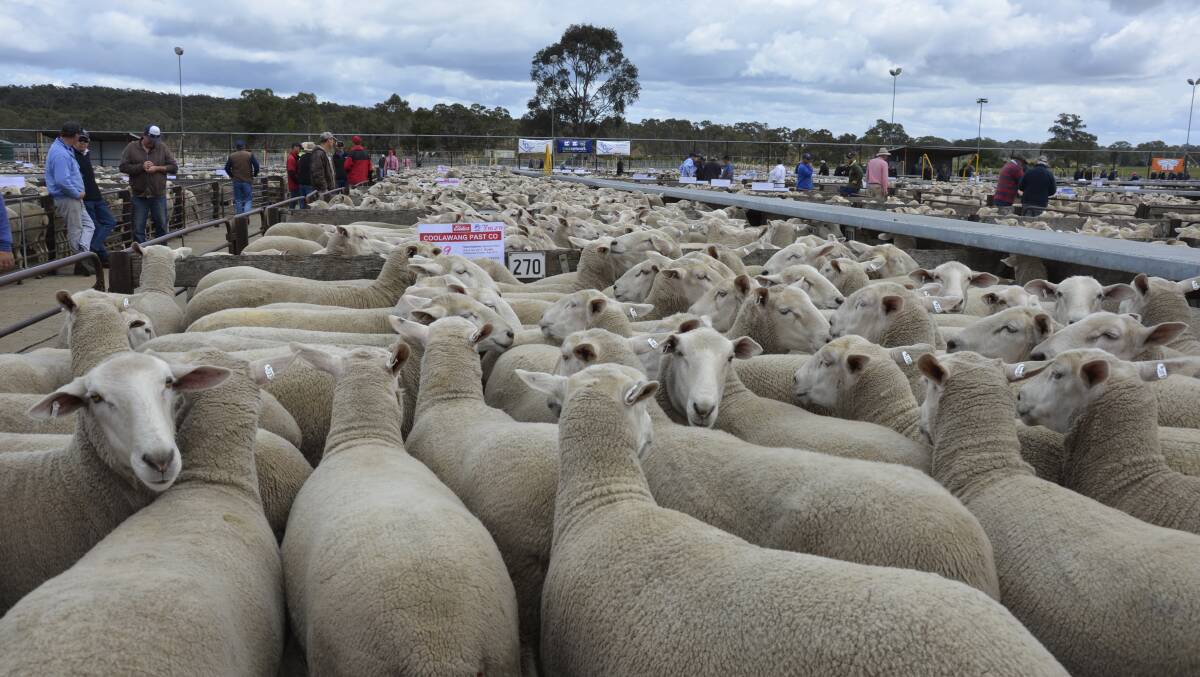
Although the National Heavy Lamb Indicator (NHLI) recently hit its highest level since the height of the drought during the winter price peak of 2019, prices are beginning to signal the spring price decline.
Subscribe now for unlimited access to all our agricultural news
across the nation
or signup to continue reading
And experts are predicting a possible substantial drop in the Eastern States Trade Lamb Indicator (ESTLI) if rumoured abattoir workforce disruptions force a supply chain bottleneck.
Currently, the NHLI is operating 27 per cent higher than the same time in 2020. This amounts to 259 cents per kilogram carcase weight (cwt).
Just over a week ago, the heavy lamb indicator peaked at 957c/kg, but more recent figures has it at 949c/kg cwt.
Compared to the record-breaking year of 2019 for lamb prices, the average year-to-date price in 2021 is operating 59c higher, averaging 820c compared to 761c/kg cwt.
But in comparison, in 2021 the ESTLI has not hit the highs reached in 2019 and 2020.
On top of this, the winter peak is already subsiding, with trade lamb prices down 6pc on the yearly peak of 917c/kg reached just over two weeks ago.
These type of figures are leading industry experts to assume the slump in prices could be signalling an early start to the spring price decline.
RELATED READING:
And according to Thomas Elder Markets (TEM) analyst Matt Dalgleish, an abattoir workforce disruption this season causing a bottleneck during the spring flush could force the ESTLA back under 600c/kg cwt.
"As the industry heads toward the annual spring flush of lambs in Victoria, there have been some murmurs of concern among processors that difficulties in finding enough seasonal abattoir workers due to international COVID travel restrictions," Mr Dalgleish said.
"This could force a supply chain bottleneck as the spring lamb volumes start to hit the saleyards and place greater than normal pressure on lamb prices than we usually experience over spring.
"Just over a week ago the ESTLI hit a seasonal high of 924c/kg cwt and has since eased 4pc."
He said if workforce disruptions eventuate this year it could place stronger than normal pressure on spring lamb pricing, pushing heavy lambs back toward a strong discount to the ESTLI.
"If the price decline seen in 2020 is any guide this could place the ESTLI back toward the mid to low 600c/kg region, or perhaps under 600c/kg cwt if the supply chain disruption is severe," Mr Dalgleish said.
Last season, when COVID disruptions to Victorian abattoirs saw government workforce constraints enforce a 65pc capacity restriction.
"This caused an earlier than normal seasonal peak in the ESTLI with the market heading south in June as lockdown restrictions were placed on Victorian meat works.
"The market moved from a 30pc gain to a 10pc loss through winter," Mr Dalgleish said.
Normally, the market often peaks in late July early August, reaching a low ebb in November as the large volumes of Victorian spring lambs hit the market.
Heavy lamb prices come close to Australian record
Heavy lamb prices came close the the Australian record late last week as the prime market took off again after a brief lull.
Bidding reached $376 for a pen of lambs at Griffith in NSW last Friday, coming within $4 of the overall Australian record of $380, which was achieved at Ballarat in February last year.
Export processor Southern Meats of Goulburn, NSW, paid the $376 for a line of 97 second-cross Poll Dorset lambs bred by the Flagg Family Trust of Townswell Park at Barellan.
Last year the family sold first-cross ewe lambs at the annual Barellan special crossbred sale for $450, which was claimed as an Australian record for that breed of commercial sheep.
Meanwhile, at Wagga Wagga saleyards last week, the Webb family of Yerong Creek sold 202 suckers to average $302.45, with the lead draft of 91 making $315.20 per head.
According to selling agents, Nutrien Ag Solutions, this was some of the dearest suckers ever sold at the Wagga saleyards.
Start the day with all the big news in agriculture! Sign up below to receive our daily Farmonline newsletter.


